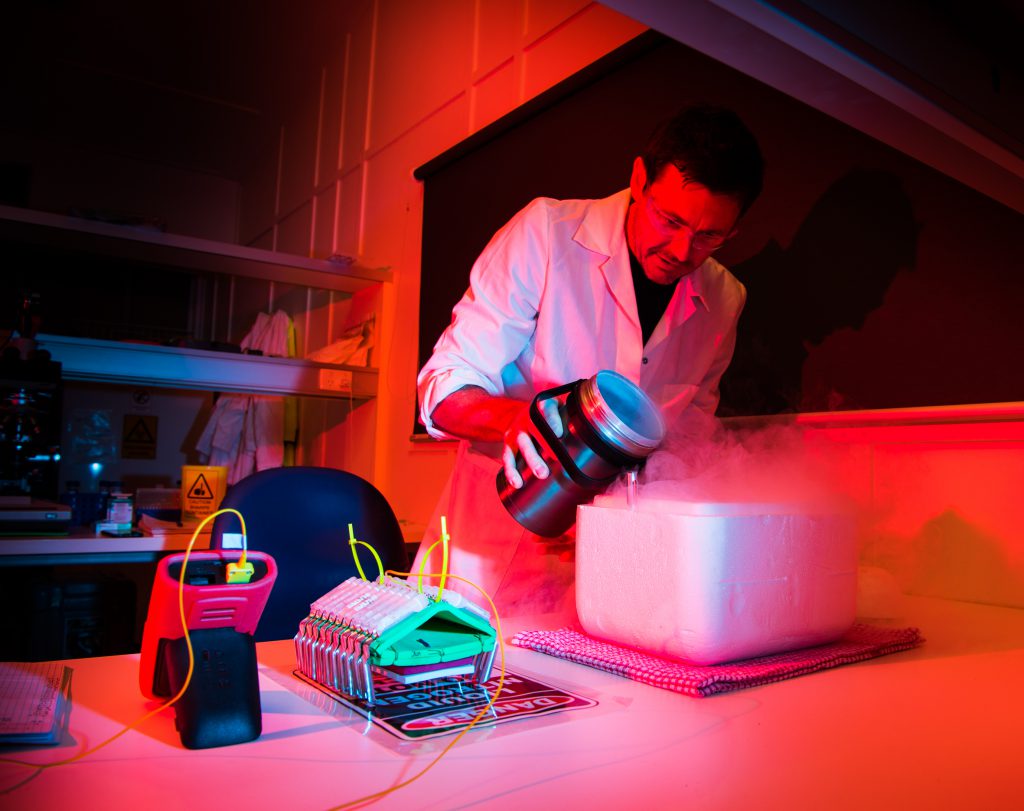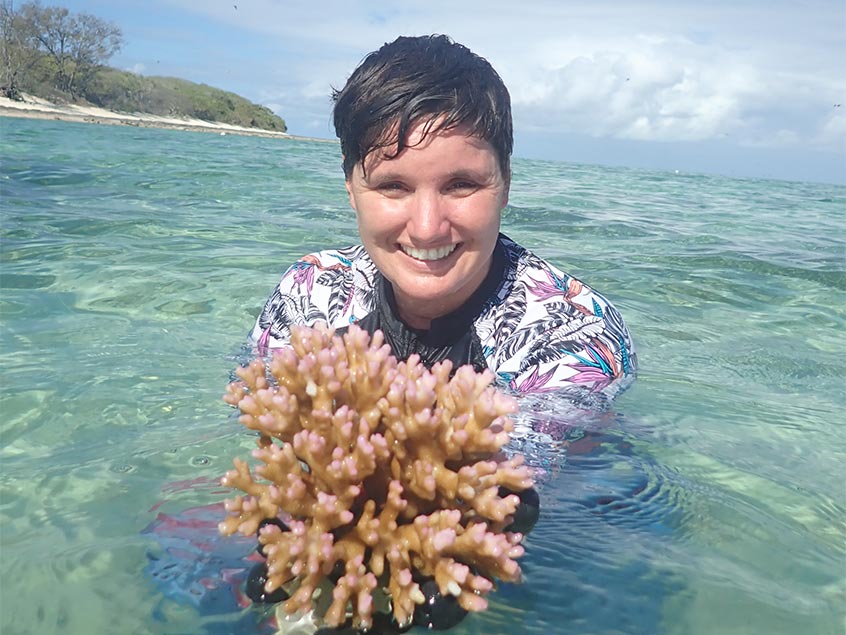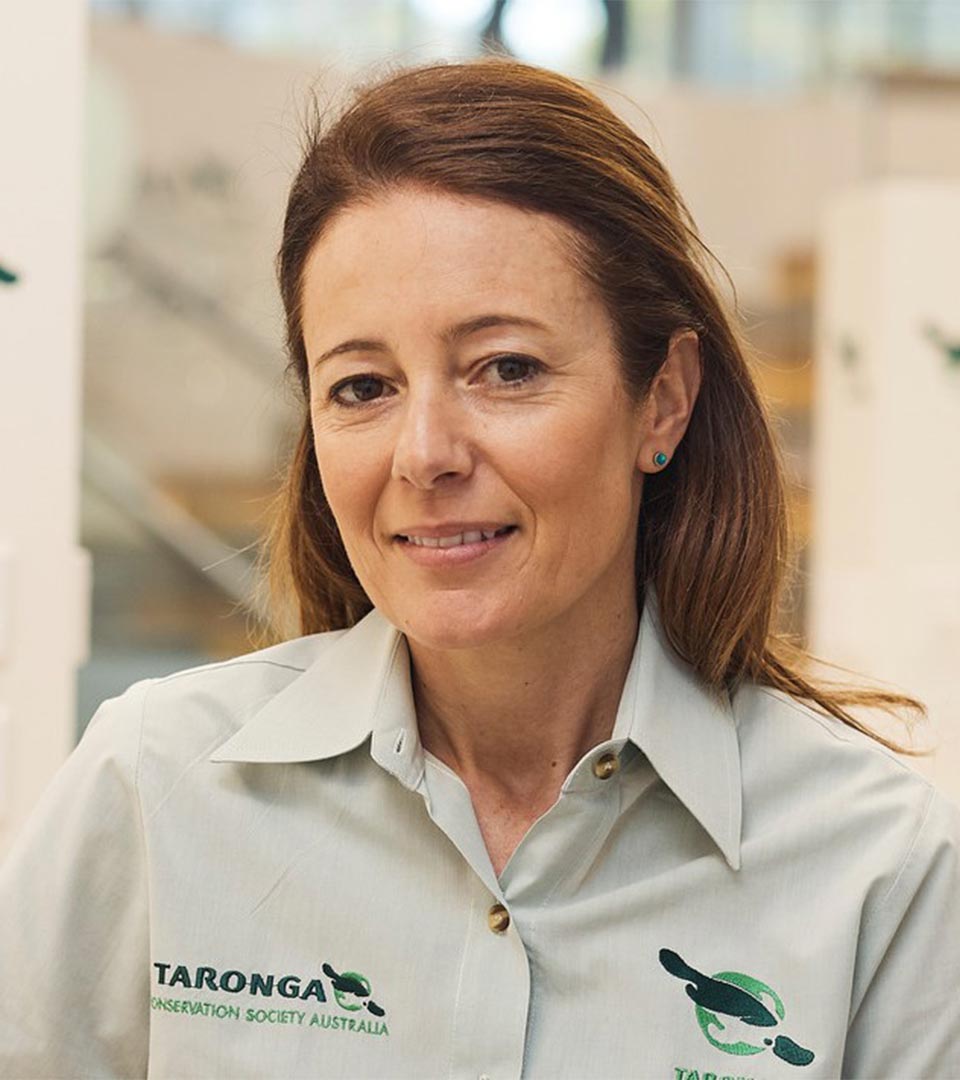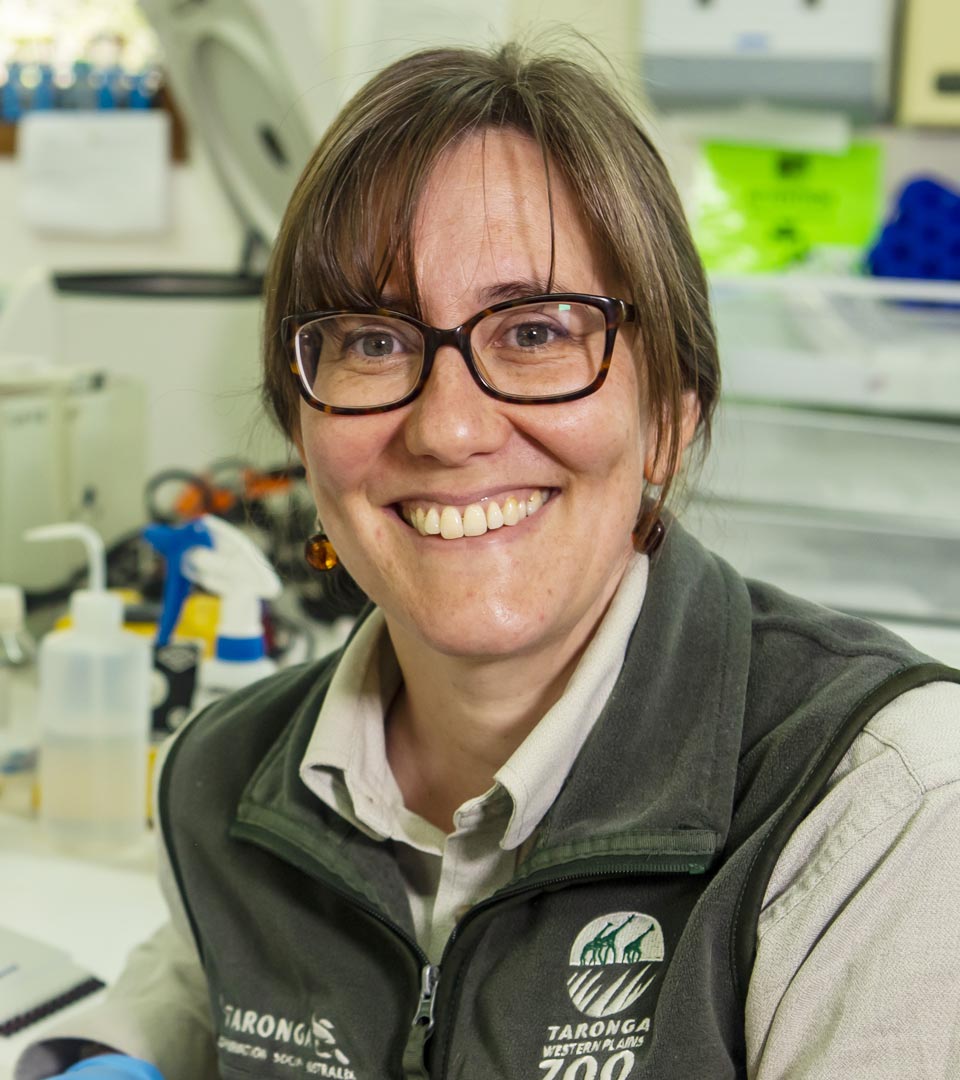Cryopreservation

Jon Daly cryopreserving coral spawn, Heron Island Research Station. Photo credit: Gary Cranitch
The RRAP Cryopreservation R&D Subprogram aims to deliver the important capability of preserving the genetic material of prioritised coral species at scale, through ultra-low temperature storage of living cells and tissues.
It supports coral propagation research and development and helps to secure the genetic diversity and ensuing resilience of Great Barrier Reef corals.
This sub-program will:
Develop and apply innovative cryopreservation techniques...
to secure genetics from high-value species, populations, genotypes, phenotypes, and broodstock from the Great Barrier Reef
Create high-throughput processes...
to enable cryopreservation at the scale required to support aquaculture and reef restoration efforts
Secure coral biodiversity on the Great Barrier Reef...
through strategic biobanking and biorepository development.
The cryopreservation sub-program will assist RRAP’s development and maintenance of coral broodstock for aquaculture and also support coral seeding programs; secure enhanced or engineered coral and its symbiotic algae (Symbiodiniaceae) for research; and facilitate assisted gene flow through the movement of cryopreserved samples among coral populations.
It could provide major scaling breakthroughs for other RRAP subprograms such as Enhanced Corals and Treatments, Coral Aquaculture and Deployment and Moving Corals.
Scope and expected outcomes
This sub-program will establish a coral cryopreservation laboratory to:
- facilitate development and transfer of novel cryobiological technologies to Australia
- expand existing Taronga Conservation Society biorepository facilities to support large-scale cryopreservation
- provide long-term biosecurity for coral samples.
Research and development will initially focus on applying high-throughput processes for cryopreservation of coral germplasm, for which basic cryopreservation methods currently exist.
Concurrent research will aim to adapt and develop cryopreservation technologies for coral larvae, tissues, and symbionts, with an emphasis on developing methods suitable for high-throughput processing.
As new cryopreservation technologies are developed and refined, research will transition from proof-of-concept to upscaling and high-throughput application at the level required to permit decentralisation of aquaculture and support larval slick capture activities.

Associate Professor Tracy Ainsworth with hard coral sample
Subprogram leader:
Aquatic cryobiology specialist and Scientific Associate with Taronga and the University of NSW
Subprogram team:
Expert in coral biology, coral disease and histopathology, coral-microbe interactions, and cell biology
Partners:
Taronga Conservation Society Australia
Taronga, a NSW Government Statutory Authority, has a strong mandate for the provision of global education and outreach, conservation research, and threatened species conservation. Taronga’s scientific programs are structured to understand and address key threats that impact on wildlife and their habitats, and to promote species’ adaptability and ecosystem resilience. Taronga’s CryoDiversity Bank, located at the Taronga Institute of Science and Learning in Sydney, and at Taronga Western Plains Zoo in Dubbo, houses the world’s largest living biorepository for cryopreserved coral. The Taronga CryoDiversity Bank is the only wildlife biobank in Australia with permanent scientific research and support staff specialised in animal physiology, cryobiology and wildlife population management (https://taronga.org.au/conservation-and-science/current-research/reef-recovery). Taronga is committed to managing the bio-secure Great Barrier Reef coral biorepository into perpetuity as a collection of state and national significance, and to providing evidence that informs policy development and conservation decision-making.

University of New South Wales’ Centre for Marine Science and Innovation and Centre for Ecosystem Science
University of New South Wales (UNSW) is a recognised world-leader in addressing society’s critical challenges of the coming decades, particularly in the science underpinning climate change, climate impacts to marine systems, marine ecology and restoration. UNSW is ranked first in the natural sciences in Australia in the 2020 Nature Index; 19th in the world QS rankings in Environmental Sciences and 33rd in the world in Earth and Marine Sciences. UNSW’s School of Biological, Earth and Environmental Sciences (BEES) provides key infrastructure associated with a cryobiology research facility as well as access to research infrastructure grants. It also provides opportunities for postgraduate research and training in Marine Science, supported by the two key centres which will provide opportunities for the RRAP Cryopreservation R&D Sub-Program, including the Centre for Marine Science and Innovation and the Centre for Ecosystem Science.





